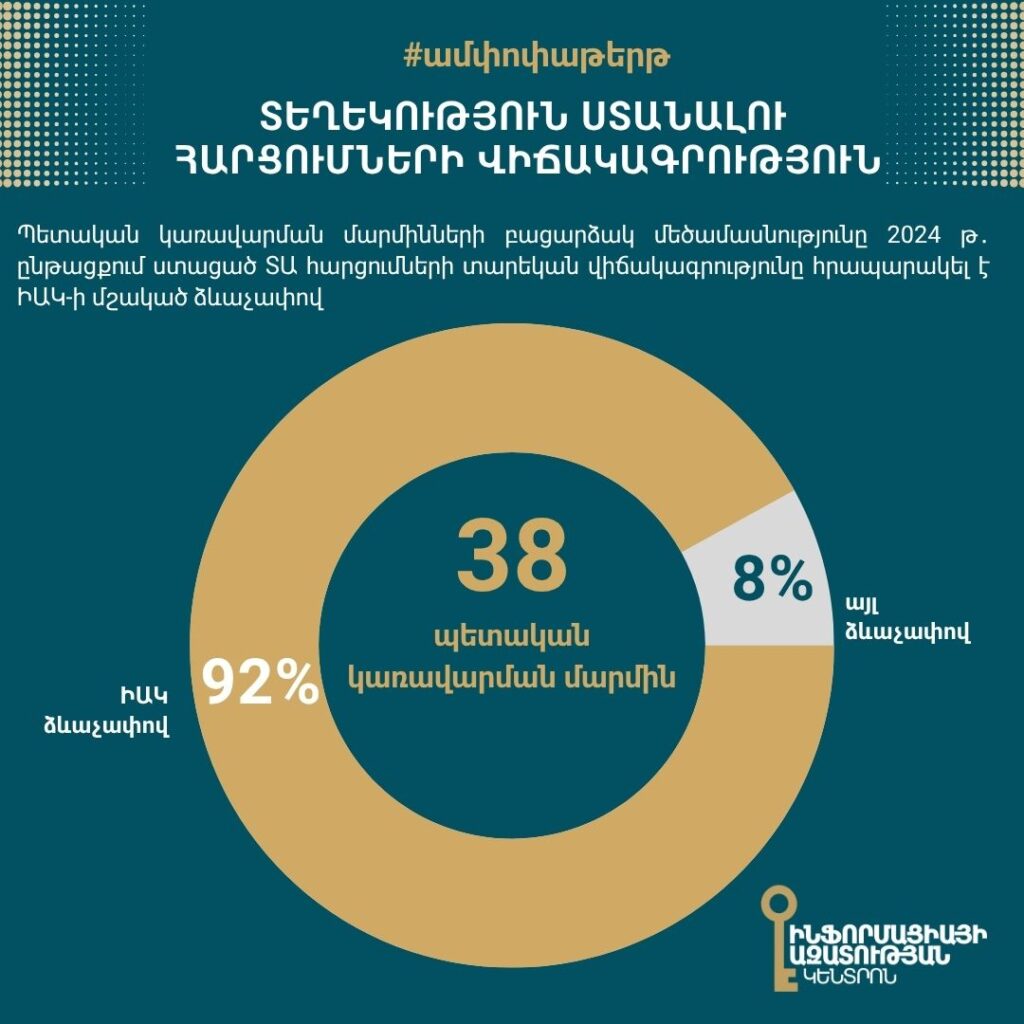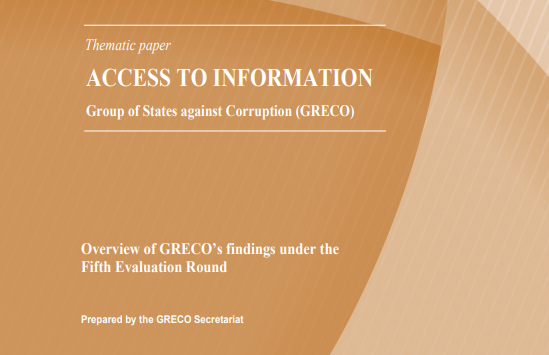Public administration bodies have published their 2024 annual statistics on freedom of information (FOI) requests using the template developed by the Freedom of Information Center of Armenia (FOICA). As of October 4, 2025, all observed state bodies had published their annual FOI request statistics.
The Law on Freedom of Information sets uniform requirements for all public authorities. Nevertheless, state institutions have traditionally differed in the timing, format, and volume of data when publishing their FOI request statistics. As a result, since 2003, there has never been a complete and uniform nationwide dataset on FOI requests.
In previous years, FOICA repeatedly addressed this problem. In 2021, it developed and distributed a unified template for publishing FOI request statistics. However, the situation remained unchanged: according to FOICA’s monitoring in the first quarter of 2025, only 8 state bodies out of those that had published their statistics used FOICA’s unified template. Moreover, both the quantity and quality of published statistics varied. About 20% of observed institutions had not published statistics at all, while roughly 30% of those that did have violated legal requirements by omitting the grounds for refusals.
This year, through cooperation with the Prime Minister’s Office – Department for Participatory and Open Governance, the practice of publishing statistics has significantly improved. The vast majority [1](92% or 35 out of 38) of the observed institutions used FOICA’s template when publishing their statistics. The Ministry of Foreign Affairs, the Office of the Secretary of the Security Council, and the Inspection Body for Urban Development, Technical and Fire Safety used alternative formats.
Two of these three institutions, despite choosing a different format, complied with the law by presenting comprehensive statistical data, including the number and grounds of refusals. However, the Ministry of Foreign Affairs provided incomplete statistics, limited only to requests received from media outlets, without indicating the number or reasons for refusals.
Despite the visible progress in the publication of annual FOI statistics, several issues remain relevant.
- Although almost all public administration bodies used the exemplary template, the mechanisms for data collection and presentation still vary. Some agencies differentiate between requests from citizens, media, and NGOs, while others present only aggregate figures (e.g., the Ministry of Territorial Administration and Infrastructure). Consequently, it is sometimes unclear whether the published data include all requests or only those from journalists and NGOs. For example, the Ministry of Justice provides separate columns for media and NGOs but omits data on citizen requests. It also remains uncertain whether requests received through social media are included. For the sake of comparability, these approaches should be standardized.
- In some cases, the template was filled out incompletely. For instance, the statistics published by the Ministry of High-Tech Industry indicate the number of refusals but not the grounds. Some institutions added extra information—for example, the Ministry of Education, Science, Culture, and Sports specified the number of e-requests submitted through the e-request platform, while the Ministry of Labor and Social Affairs, modified the template and updates quantitative data on a monthly basis.
- The FOI Law requires not only the publication of information but also its accessibility, meaning that data should be available in formats suitable for analysis and easy to locate on official websites. While the issue of the format has largely been solved, the placement of statistics on institutional websites remains inconsistent. The most positive examples are seen on the websites of regional governor’s offices, which follow a uniform structure and post the document in the same section. In contrast, some other bodies lack a dedicated section for FOI statistics, and the documents are placed arbitrarily depending on website structure. In certain cases, the statistics are difficult to find due to unclear publication logic—for instance, the Office of the Secretary of the Security Council published its data under the “Announcements” subsection of the “Information” section. A unified approach to placement—such as under a “Freedom of Information” → “Statistics” section—would make access faster and simpler for users.
- Finally, the question of the purposeful use of published statistics remains open. There is no system for aggregating and analyzing FOI request data across government bodies. As a result, no comprehensive picture exists to reflect trends in freedom of information within the public administration system, to identify systemic issues, or to assess the effectiveness of applied solutions.
From the perspective of ensuring the effectiveness of statistical data, it also remains unclear which authority is responsible for guaranteeing the mechanisms, formats, and periodicity of publication. At this stage, the best solution would be for the Department for Participatory and Open Governance of the Prime Minister’s Office to assume responsibility for continuous monitoring of this process. Notably, in 2025, this Department effectively coordinated the publication process; hence, it could also take on the role of summarizing and analyzing the collected data until a designated FOI oversight body is established.
FOICA’s unified template is available here.
The results of the monitoring conducted in early 2025 can be found here.
More information on the issues related to FOI request statistics is available here.
[1] The monitoring covered 38 public administration bodies, including the Prime Minister’s Office and all ministries (13), 15 bodies under the Prime Minister and the Government, and 10 Staff of Marzpets.










